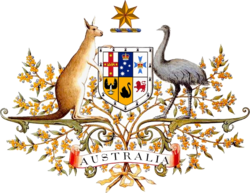
Today’s balance of payment figures have raised the possibility of a negative GDP print in tomorrow’s national accounts. From Westpac:
Q2 net exports: flat
Net exports were neutral for GDP growth in the June quarter. That was weaker than expected (market median 0.1ppt, Westpac 0.2ppts)
Exports provided the downside surprise, rising by 1.3% (Westpac f/c 2.5%) Imports were as anticipated, rebounding 1.6% following a sharp fall in Q1.
We already know that inventories will contribute 0.3% but private GFCF will be negative and household consumption expenditure will likely be flat to negative. That only leaves government investment and expenditure. Again from Westpac, it’s come in well ahead of expectations:
Q2 public demand
Public demand spending exceeded expectations. While there was apparent resilience in the June quarter, the pattern is one of volatility around a weak trend as governments aim to consolidate their budget positions.Consumption rose 0.8%qtr (Westpac f/c 0.3%).
New public investment rose by around 4.4%. Gross investment fell almost 29%, but this fall was explained by a shift in 2nd hand asset transfers between the public and private sectors.These numbers suggest that public demand increased by around 1% to 1.5%, adding about 0.2ppts to growth.
We caution that estimates of 2nd hand transfers tend to differ between this update and the National Accounts, thereby potentially impacting the public investment estimate.
Westpac is sticking with 0.6%. I see downside risks to that target but government has probably saved us from a negative print (within the bounds of the GDP lottery that is).

